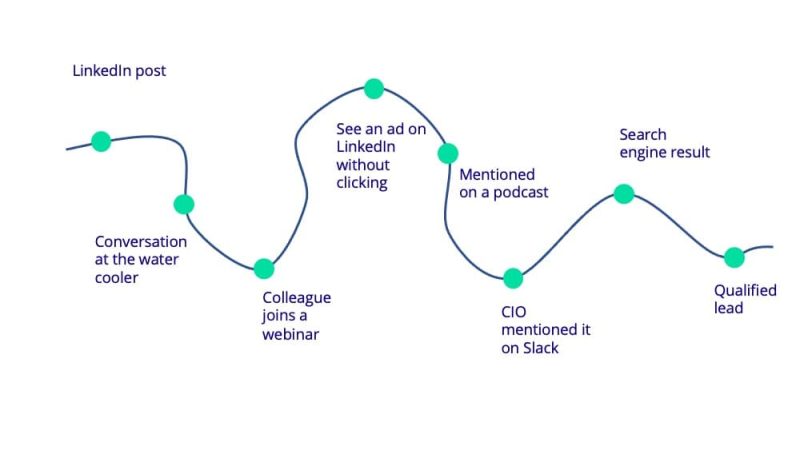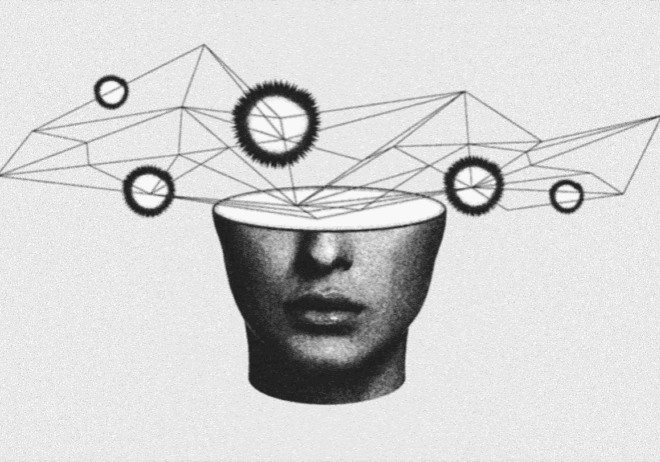
Dark Funnel Marketing: The Invisible Hand Behind Every Click
It always happens, doesn’t it? You are chatting with a friend on WhatsApp when a friend casually drops a link to a new skincare brand they have been loving. Later, you spot someone raving about the same brand on Instagram Stories. You add their bestseller to your cart without seeing it after a week. That’s dark funnel marketing in action—where influence happens beyond trackable channels.
No ads, no email, no obvious trigger. You don’t even remember how you got there. But the brand was already in your head.
Welcome to the dark funnel — the mysterious part of the customer journey where traditional tracking tools go blind, but conversions still happen. It’s where decisions are made in whispers, not clicks. And for marketers, it’s both frustrating and fascinating.
Let’s shed some light on this shadowy funnel and see how brands are learning to navigate it.
Let’s understand what a dark funnel is
In simple terms, the dark funnel is the part of the buyer’s journey that happens off the radar of traditional tracking tools. Think private Slack conversations, word-of-mouth recommendations, WhatsApp links, podcasts, or Reddit threads. None of these leave a cookie trail, but they all influence buying decisions.
The term gained traction in B2B marketing, where buying behavior became more complex and less trackable. But let’s be real—it’s just as relevant for DTC brands, SaaS tools, or even lifestyle apps. Consumers today are doing their own research, talking to peers, lurking in Discord groups, or bingeing YouTube reviews—all without ever touching your website or clicking your ad.
So, when they land on your site or fill out a form, they’ve already decided.
Why does the dark funnel matters (more than ever)
We live in a world where trust in paid media is declining, but trust in peers, influencers, and communities is growing. Combine that with privacy updates like iOS 14 and the death of third-party cookies, and you’ve got a perfect storm. Tracking is harder, attribution is murkier, and marketers lose visibility quickly.
Yet somehow, buyers are still converting.
This shift is forcing brands to think differently. Instead of obsessing over last-click attribution, smart marketers are now asking: “What invisible touchpoints led them here?”
Real talk: What happens inside the Dark Funnel?
Picture this: Alex is commuting, listening to a niche podcast, when your brand gets a casual mention. Later, they spot a LinkedIn post from someone in their network raving about your product. Curious, Alex heads to Reddit to check reviews—everything looks solid.
Then comes the nudge. A colleague DMs them your pricing page with a simple “This might be what we need.” Minutes later, Alex lands on your site and signs up. To your CRM, it’s just a direct visit. But behind the scenes? A whole invisible journey just unfolded. That’s dark funnel marketing in motion—happening every day.

Mapping the Invisible: How brands are cracking the code
Here’s the million-dollar question: If you can’t see it, how do you measure it? Spoiler: You can’t—at least not in the traditional sense. But you can triangulate, listen harder, and build systems that capture signals from the shadows.
Ask Better Questions
Instead of relying only on digital tracking, many brands are adding “How did you hear about us?” as a required field in lead forms or post-purchase surveys. It sounds basic, but it works.
Pro tip: Make it open-ended. You’ll be surprised how often you hear things like “saw a Twitter thread,” “podcast mention,” or “friend sent me your site.”
Lean Into Dark Channels
If you know your audience hangs out in Slack communities or Reddit forums, go there—not to sell, but to add value. Brands like Notion and Figma grew by being organically useful in places where traditional marketing couldn’t reach.
Treat Content Like a Currency
Dark funnel marketing thrives on shareable, valuable content. Think infographics, micro-videos, insightful carousels, or even really good memes. These get screenshotted, forwarded, or reposted in private groups—all outside your tracking tools.
Invest in Brand, Not Just Performance
You can’t optimize for the dark funnel with CPCs and ROAS. You need top-of-mind awareness. That means building a brand that people trust, talk about, and remember—even when no one’s clicking.
Nike didn’t track how many people bought sneakers because of a Serena Williams ad. But they knew.
Use Dark Funnel-Informed Attribution
Platforms like HockeyStack, Dreamdata, or Mutiny are trying to connect the dots with multi-touch attribution models that include qualitative data. No tool is perfect, but they offer a better picture than your average dashboard.
Brands who get it right: wins from the dark side, and What’s next
Gong nailed dark funnel marketing by consistently sharing value-first content on LinkedIn—not to sell, but to stay top of mind. Duolingo took a totally different route, using funny, offbeat TikTok videos to build brand love. When people are ready to buy or try, these brands are already in their heads.
According to Digiday, Duolingo’s “unhinged” TikToks have driven a major uptick in app engagement and downloads.

Gymshark is another great example—growing not through big-budget ads but by showing up in real conversations. They partnered with niche fitness influencers and built an inclusive, loyal community. These brands prove one thing: even if you can’t track it, the dark funnel is very real and powerful.
Dark funnel marketing isn’t about replacing your funnel. It’s about acknowledging the parts you can’t control—and designing strategies that speak to them.
Instead of obsessing over exact ROI, think about reputation, recognition, and relevance. Those are the currencies of the dark funnel. And if you nurture them, the conversions will come quietly, but consistently.
Cut to the chase
The future isn’t less marketing—it’s smarter, more intuitive marketing. As privacy rules tighten and visibility shrinks, the best brands won’t panic; they’ll adapt. They’ll lean into creativity, empathy, and the real ways people discover and decide, because behind every so-called “direct” visit is a journey. And the brands that will lead tomorrow are the ones who learn to trace the story behind the click, not just the click itself.


